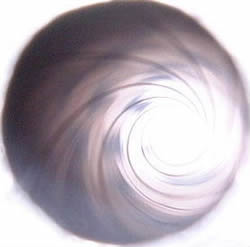Q&A About Rifling Depth
January 23, 2015 2:09 amThe following was published in the 2002-2 issue of Very High Power, the magazine of the Fifty Caliber Shooters’ Association as a response by Dan Lilja to a reader’s question.
A Question Concerning Uniform Rifling Depth at the Muzzle of a .50 Caliber Barrel.
Hi Irv,

Uniform rifling depth is important for several reasons, one of them being the possible effects mentioned in the above stated question. If a bullet is the same as or larger than barrel groove diameter then it will conform to the geometry of the barrel. A jacketed bullet that is undersized by up to about .001” will also obturate to barrel groove diameter under firing pressures. If one or more grooves are deeper than the nominal diameter, the bullet will in most instances, fill to groove depth. If however, the groove diameter varies and/or becomes larger at the muzzle, the bullet will not fill the void and gas will escape past the bullet. It is also quite likely that the bullet will begin to yaw while still in the barrel. This yaw will only become worse once the bullet leaves the barrel and accuracy will suffer.
In the ideal scenario the bullet is the same diameter or slightly larger than the barrel groove diameter, all of the grooves in the barrel are the same depth and the bore and groove depth are uniform the entire length of the barrel. If the chamber and throat are cut into the barrel concentric with the bore centerline, the bullet will start into the rifling rotating about its geometric center. When a bullet does not rotate around its center of form it is said to be yawing while in the barrel.
Other critical dimensions that can hinder this situation include a throat diameter too large, and off-center throat, improper throat lead angle for the bullets being used, the rifling problems already mentioned, and inconsistencies in the twist rate or an improper twist rate for the projectile. In my opinion a throat diameter much over .511” is too large for conventional jacketed bullets, like the Hornady A-Max. Bore-rider type bullets operate best in special throats designed for the specific bullets. Too much diameter is again a detriment.
There are a few other physical characteristics that a barrel should measure up to as well. The barrel should be of a diameter suitable to maintain a desired level of stiffness for the accuracy desired. Stiffer barrels are more accurate, all other factors being equal. Married with stiffness is barrel length. A longer barrel is less stiff and so there is always a compromise with barrel length and bullet velocity. Obviously a longer barrel will generate more velocity because more of that slow powder that we use in 50’s is allowed to produce gases while the bullet is in the barrel. But a long barrel is less rigid unless the outside diameter is increased at the same time. Also, a barrel that has internal stress present, either from the steel mill or other processes, will begin to walk as the barrel heats from firing. The internal finish of a barrel should also be such that it reduces bullet fouling to a minimum. A rough finish will strip bullet material off and leave it as a deposit on top of the rifling. Subsequent shots will leave additional fouling in this area and too much fouling can then cause bullet yaw.
The questioner asked about ‘micro lapping’. While that is not term normally used in barrel making, I assume that he is asking if a barrel can be lapped in an effort to increase the groove depth of the shallow grooves to that of the deep groove. In my opinion this would not be a workable solution. First, it is likely that all of the grooves would then become larger than they were nearer the chamber. We’ve already said that it is best to have groove depths that are uniform from throat to muzzle or slightly smaller in diameter towards the muzzle. And a spot lapping technique would probably produce the opposite effect. It is best if the barrel is uniform in diameter from the maker. Any after-the-fact ‘fixing’ of the problem is likely to make the situation worse or introduce a new problem.

